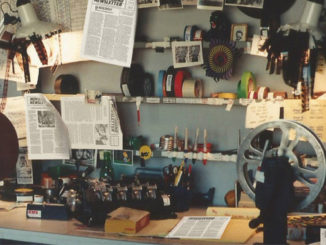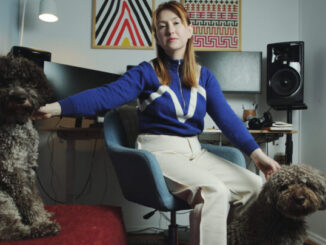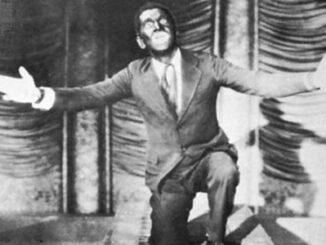
by Garrett Gilchrist • portraits by Deverill Weekes
By day a forensic blood-pattern analyst for Miami’s Metro Police, Dexter Morgan (played by Michael C. Hall) is secretly a serial killer. Divorced from human emotion, Dexter nonetheless abides by a personal code: He only murders murderers who would otherwise go unpunished, as he tries to find humanity in himself.
Getting audiences to sympathize with a sociopath is no easy feat, but over eight seasons since 2006, Showtime’s Dexter has received 25 Emmy nominations (winning four), 10 Golden Globe nominations (winning two), and 12 SAG Awards (winning one), with ratings rising each year. The show began its eighth and final season in June.
“The soundscape of Dexter is surreal,” says Emmy Award-winning supervising sound editor Fredric Judkins, who, along with the show’s mixers, work out of Technicolor Sound Services on the Paramount Pictures lot. “Everything is from his point of view. The only reality you’re seeing is what he is experiencing, or allowing you to see. It’s very creative from a mixing standpoint.”
Indeed, Dexter’s sound teams have garnered multiple Emmy nominations. “You can pull out real elements and play what’s in his head, his emotional response,” Judkins continues. What you would typically do with music, we might do with synthesized sound. Or you can go wide, and have him suddenly surrounded by a very real or hyper-real environment.”
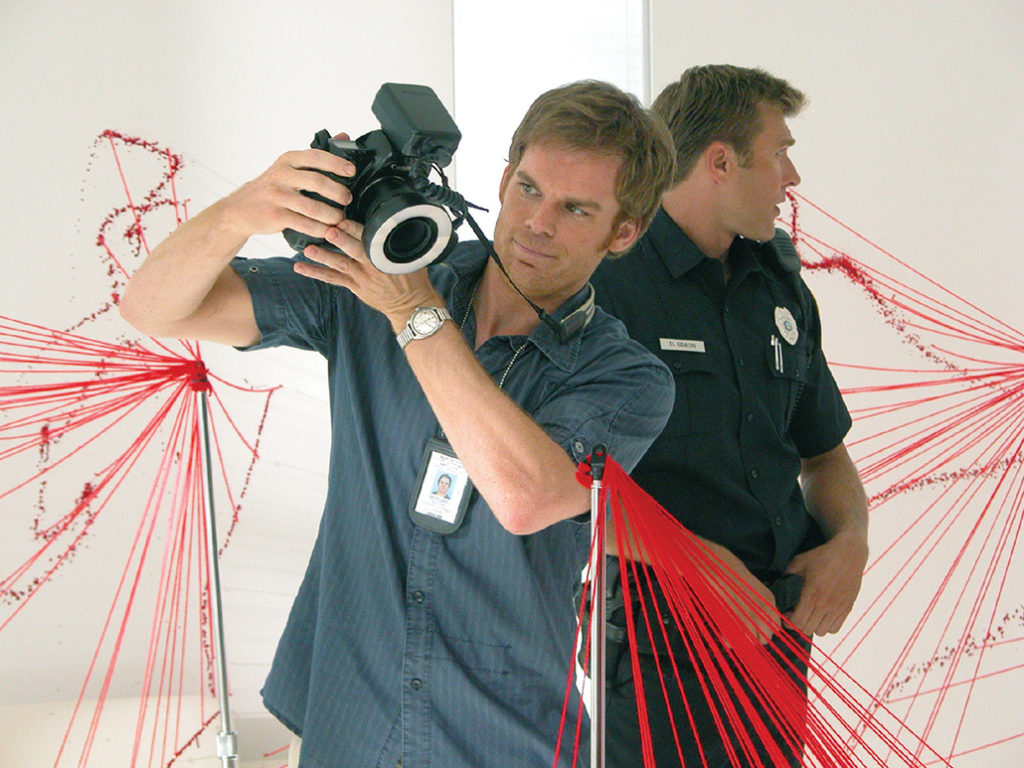
Courtesy of Showtime
The sound editors deliver 80 channels of sound effects and backgrounds, 24 channels of dialogue and ADR, and 20 channels of music — all cut feature-style. “We have to give the mixers control over every sound,” Judkins reveals. “I give them discrete choices.”
Kevin Roache, CAS, started as season one’s mix stage recordist, mixing the foreign versions of the show before graduating to sound effects mixer for the third season. Roache knew Hall from working on a previous Showtime series, Six Feet Under. “Right from the beginning, you knew Dexter was different and daring, and would be exciting to work on — and it has been, for eight years.”
“I thought it was an instant classic, and perfect for cable, because you could get away with more adult themes,” adds Judkins. “It’s modern crime noir; every episode was a terrific surprise. You never knew who was gonna survive.”
Pete Elia, CAS, has been dialogue and music mixer since season five. “My first job was as a scoring assistant, then scoring mixer,” he explains. Elia mixed sound effects for five years before moving into dialogue and music in 2001. He worked alongside supervisors who are now the management of Technicolor Post. “It was a terrific opportunity,” he says. “They’ve really created something special at Technicolor. They thought that Kevin and I would make a strong partnership; they’re great at fostering teams who work well together, and letting that relationship develop. Over time, we’ve created an almost unspoken language.” The Emmy-nominated mix team’s other work includes True Blood, Eastbound and Down, The Client List and Revenge.
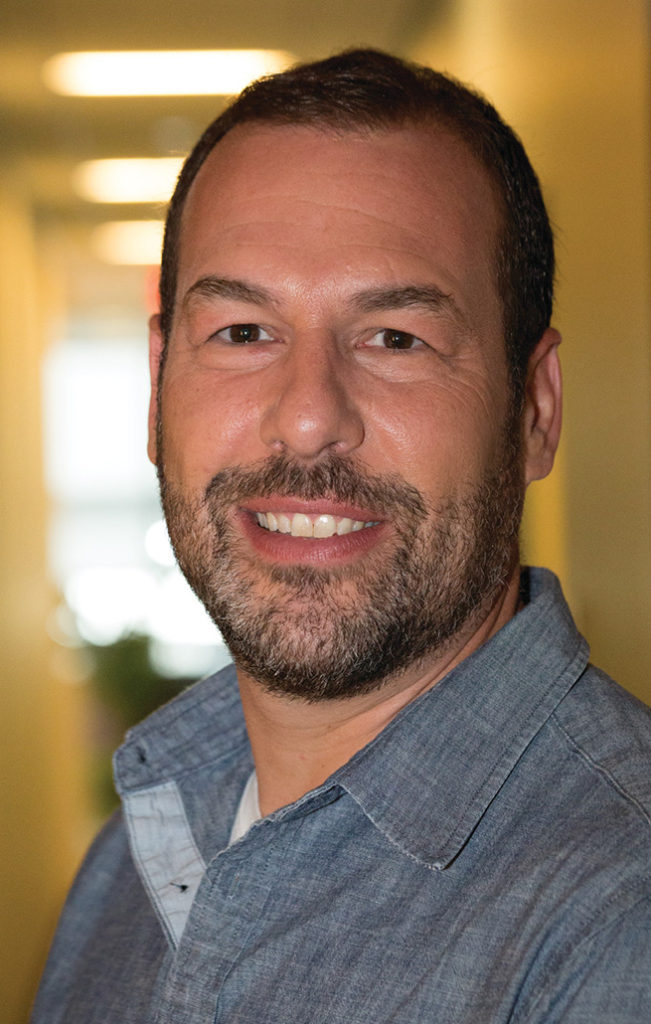
“It’s a crew of two. I mix dialogue and music,” Elia explains. “Kevin handles hard effects, backgrounds and Foley. It requires a lot of imagination. But we’re always looking at the whole track, the big picture.”
“It’s really efficient,” concurs Roache. “When I was pre-dubbing effects by myself, I might concentrate on a slew of things that didn’t matter. When we can hear it all together, we know what’s needed to tell the story.”
The producers see the character of Dexter as having different, sonically distinct modes of operation; that drives their creative decisions. “We hear what he’s thinking, his true serial-killer self,” Elia says. But Dexter also plays the normal guy, trying to be a good father and brother. “He’s increasingly conflicted about that, and whether or not he wants to be good. It’s like he doesn’t know what that means, because that part of his brain isn’t working right.”
Sound plays a major role in the title sequence, where Dexter shaves, gets dressed and cooks breakfast. Although nothing violent occurs, the sequence sets a horrific tone, with ghoulish close-ups of cutting and frying meat. “It’s very focused, textured macro sounds,” Elia offers. “Those punctuations remind the viewer: This is disturbing. The spell of the show is that you really are pulled into liking him. Then suddenly, you snap back to reality, to the gore and horror of it. It isn’t necessarily big and broad; it’s focused moments. The producers aren’t afraid to make it all very real.”
Roache agrees: “We take great effort to create an authentic, realistic space that the viewer can be part of. It makes it more upsetting, like this could actually happen.”
“Quiet is as important as loud,” adds Elia. “For every bigger action sequence we have, there are quiet moments where we hold back, like when Dexter silently stalks his victims. That contrast is powerful.”
Much of Dexter is filmed on location, mainly in the Los Angeles area. The crew uses state-of-the-art digital processing to eliminate traffic and generator noise, and even fans cheering in the background. Says Judkins, “Pretty much the only thing we keep is the production dialogue. They give us isolated tracks on all the actors. We take great care to edit out material that will be problematic in the mix. The rule is always to save the production performances. Pete and Kevin are geniuses at making it all sound seamless and smooth.”
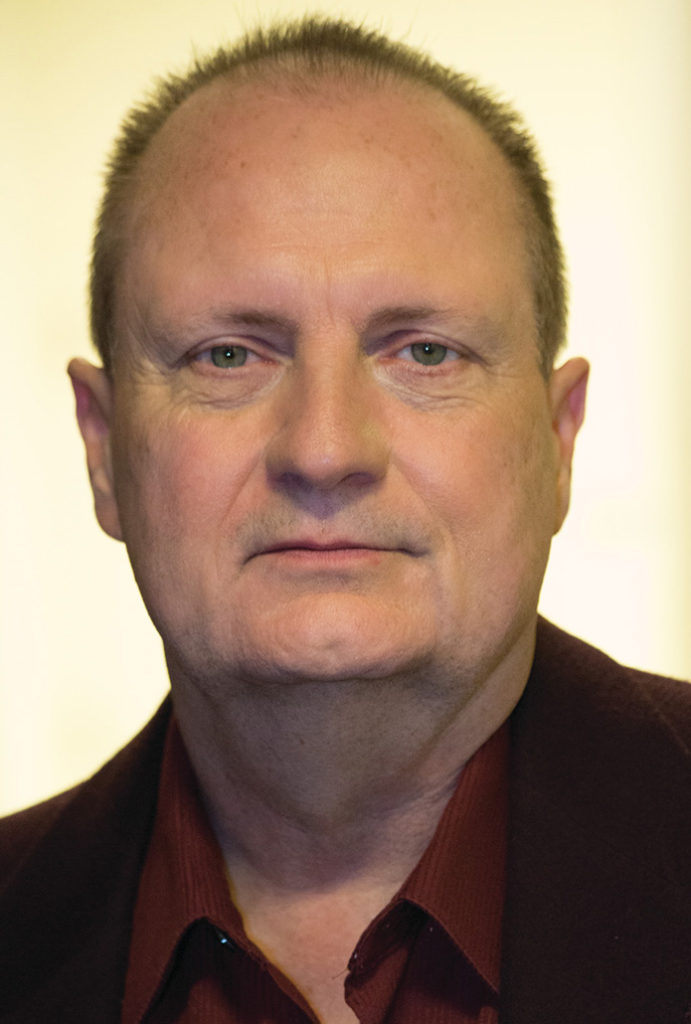
“It’s ADR-light,” laughs Elia. “They very much want to preserve what was created on the set. But the actors are all very good at ADR on this show.”
“They’re very fine performers,” agrees Judkins. “Michael has a Golden Globe, an Emmy and multiple nominations. In a noir show, someone is always planning a crime or talking about one. There’s a lot of quiet, sotto voce performance. But the ambience around them is heavy, certainly recording in a big city like LA. The challenge is to keep the brilliance of those performances clear in the midst of a big mess.” This challenge often falls to dialogue editor Christian Buenaventura. “He’s a really tenacious, talented man.”
“The editorial staff is huge,” says Elia. “I don’t even see half the stuff they do, because it comes to me already done. They’re constantly cleaning up ticks, pops and noises, clothing rustle and stage noise.” The mixer uses a Dolby Cat-430 for analogue single-ended noise reduction, and digital Cedar Audio Tools. “I’m not an offline person. I like the live flow of mixing. It’s rare that we’ll do a no-noise clean-up digitally via Isotope plug-ins. You can really damage the signal by being too aggressive with any one thing. I use these tools in stages, and lightly. I do as much as I can in the mix, raising and lowering faders and matching EQ to make it sound clean.
“If the character is outside and it’s noisy, usually that can be justified,” Elia continues. “Kevin builds the world around that, filling in the highs and lows that the production track doesn’t have, so it has a natural sound and helps hide any imperfections.” The editors build many different traffic backgrounds. “Kevin finds traffic in the same frequency range to help mask and fill any uneven moments. We try to get the technical clean-up done quickly. We’d rather spend time thinking about story and performance.”
Judkins starts out spotting the show with composer Daniel Licht, music editor Mark Bensi and music supervisor Gary Calamar. “We’re fortunate to be working with Daniel,” he says. “He’s just a genius.” Roache agrees: “I love that the score changes temperature all the time. The music that scores Dexter is very chilling and cold, but that’s contrasted with the hot Latin music of Miami.”
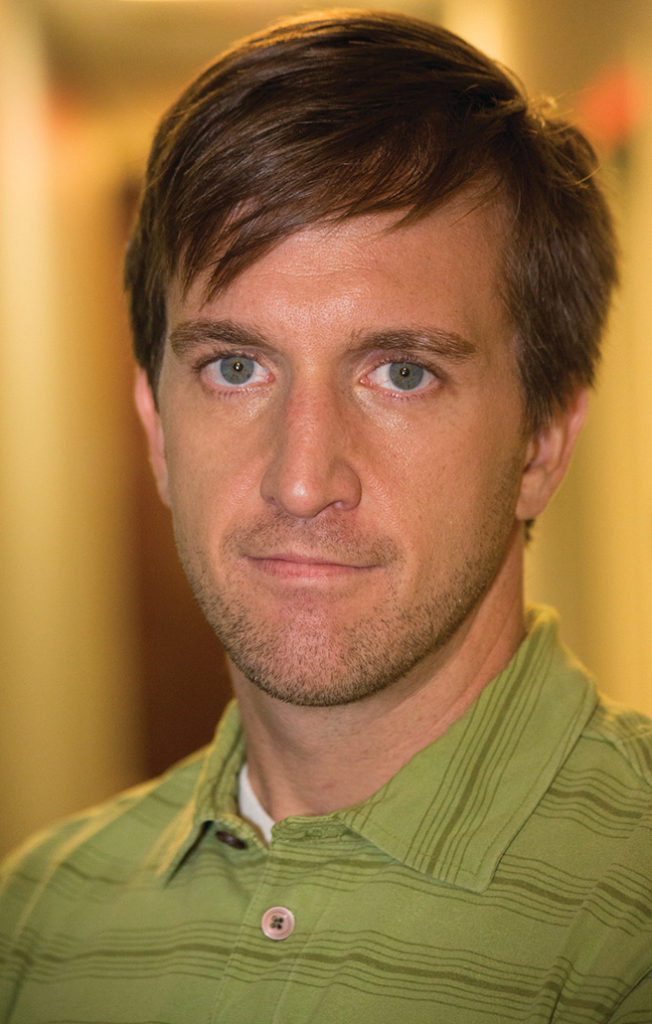
“His music is an integral part of the subtext,” adds Elia, “whether that’s satirical, farcical, or very dark. Sometimes Dan will come to playback, but Mark is really his representation on the stage, ready to do any fixes and changes. He does a great job.”
Executive producers Sara Colleton and Scott Buck, post producer Shawn Petersen and one of the picture editors are there to discuss the direction the soundtrack will take. “They tell Fred what’s needed, what needs to be cut, problems that were encountered and ADR lines that need to be added or changed,” Elia explains.
Over five days of sound work, Judkins supervises a crew of 15. “A lot of good work happens in a very small amount of time,” he says. “When it gets to the stage, it’s ready to go.” Roache adds, “The sound effects editor, John Snider, is incredible,” also praising the Foley team of Scott Curtis, Alicia Stevenson and Dawn Fintor.
Judkins uses a group of six ADR actors, cast by Joyce Kurtz, who speak authentic Hispanic and Cuban dialects, performing each scene as background ambience. “You can use a lot of it, or less of it, but you have that flavor of it being authentic,” he maintains. Judah Getz and Evan Daum are the ADR mixers. “It’s a fabulous crew — top people working at the top of their game.”
“They shoot with a hot light,” says Elia. “It’s all very stark sunlight when they’re outside. Our composer will give us Latin music to play through the windows. Fred records ADR of radio announcers in Spanish. The walla in the police station is fantastic. You hear spurts of Cuban-accented Spanish. You can really feel it, even when it’s played low. It all comes together to bring us there, to become Miami.”
Each one-hour episode is mixed from pre-dubbing to final in two working days, from 8:00 a.m. to 6:00 p.m., with a one-hour lunch break. “That’s quite a feat,” says Roache. “This wouldn’t be possible without Fred and the crew,” Elia adds. “Sometimes that’s the first time we’re seeing the episode. It’s very much a live performance, as we react to the flow of the story. Some mixes are bombastic and full, others are more nuanced and delicate.”
The mixers use Euphonix System 5 Fusion consoles. “Technicolor has the most true and advanced mix stage we have experienced,” Elia enthuses. “Everything was built just two years ago.” Separate Pro Tools systems make up the recorder, dialogue, effects, music and outboard gear plug-in machines. “That’s reverb, dialogue-chain clean-ups and more special effects than we’ll ever need,” he says.
Elia begins his job with a dialogue pre-dub pass. “I’m putting the volume where it needs to be, making the voices sound good, full and final, matching angles and mixing in ADR,” he explains. His work is remembered in automation. Meanwhile, Roache builds up the backgrounds, and the major hard effects. “We’re spitting out a first pass for two or three scenes, reacting to what we hear technically,” he says. “Then we go back and refine the sounds, panning them, building up the sound effects and making the track dimensional.
“The mix revolves around dialogue,” Roache continues. “It’s how you understand what’s going on. Dialogue dictates how loud or soft everything else should be, and whether it should be there at all. You get rid of anything that’s confusing the story. Sound effects are there to accentuate the performances.”
Adds Elia, “Television stations require us to deliver within a very specific technical level. Sometimes at home, the music blasts you across the room but then you can’t hear dialogue. If you can hear the words comfortably, we want everything to feel correct dynamically around that. I’ll set the music faders very low at first, and let it insinuate itself into our brains. Once the dialogue and major effects are set, I’ll run the emotion, putting the music loud or soft where it needs to be.”

Three hours into the second nine-hour day, the first pass is complete and ready for playback. “We all take our notes,” says Roache, “and catch little and big things.” For final playback, the executive producers are present, as is Showtime producer Joan Boorstein. “We take additional notes and make it as good as we possibly can for the rest of the day.”
Judkins considers Dexter as an anti-hero in the Shakespearean sense, a vigilante helping to clean up the world. “That moral ambivalence is what’s makes it such a successful show,” he says. “Dexter has a specific point of view and we’re all dialed into it. We don’t spend half the mix experimenting. The producers know what they want and we know how to deliver it. The mixes have historically been very smooth. It’s not a boxing match where everyone has a different idea. Everyone’s on the same page.”
The stage recordist is Jared Orlando. “He keeps everything on schedule,” says Roache. “We couldn’t do it without him.” Elia agrees: “Jared keeps all these Pro Tools systems running. When the sessions come from Fred, he makes sure they’re technically right and on the right machine. The delivery formats on this show are extensive.”
Elia had been used to delivering both a 5.1 and 2.0 mix. “On Dexter, we’ve abandoned that,” he explains. “Today, the set-top boxes create the fold-down, so even if we monitor an LTRT, we can’t be sure that’s what you’ll hear at home. We use all the channels. We use the boom. We have people who QC the 2.0, but we really just focus on the 5.1.”
“I really think this is the new golden age of television,” says Roache. “The stories being told are so different and unique; they’re not watered down or smooth around the edges. We’re incredibly grateful to be part of a show as excellent as Dexter. It drives us every day.” Adds Elia: “We’ll be really sad when it’s done. We don’t know how it ends!”
“It’s such a well-run show, and it’s been a dream to work on,” summarizes Judkins. “We’re just hoping that when Dexter’s young son Harrison becomes a serial killer, we will get to work on the spin-off!”



